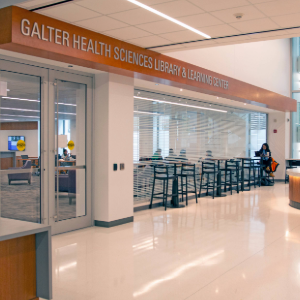On July 1, 2025, the updated NIH Public Access Policy took effect, requiring authors to ensure immediate public access to NIH-funded peer-reviewed manuscripts in PubMed Central. This change is part of NIH’s continued efforts to make the results of publicly funded research freely and immediately available to the public
Over the past two months the library has fielded a range of questions from authors, administrators, and research teams as we navigate these changes together. Below, we address some of the most frequently asked questions we’ve received and summarize key updates.
A Quick Overview
All NIH-funded manuscripts accepted for publication on or after July 1, 2025, must be made publicly available in PMC immediately upon publication – including when the article is first made available online, such as in epub ahead of print formats. NIH Notice NOT-OD-25-047
- Embargoes are no longer permitted: This update eliminates the 12-month embargo allowed under the previous policy.
- Hybrid journals APCs may not be covered: Article Processing Charges (APCs) for hybrid journals are likely not allowable as direct charges to NIH grants.
- Authors do not need to pay to comply with the policy: The submission process using the NIH Manuscript Submission system (NIHMS) remains free
- Two Submission Pathways remain unchanged:
- Authors may deposit their Author Accepted Manuscript (AAM) to PubMed Central using NIHMS.
- Authors may publish in a journal that has an agreement with the National Library of Medicine for automated deposit.
- Three-month grace period: If your manuscript is still in process at NIHMS by the time it’s published, an NIH Manuscript Submission identifier (NIHMSID)may be used in lieu of a PMCID for up to three months following the Official Date of Publication.
Frequently Asked Questions
How do I know if my manuscript is subject to the new zero-embargo rule?
- If your NIH-funded article is accepted for publication on or after July 1, 2025, and the related NIH grant is active or recently closed, the new policy likely applies. However, NIH clarified that manuscripts resulting from grants that fully closed before July 1, 2025, may still follow the previous policy allowing a 12-month embargo. For details visit the NIH Public Access Policy FAQs: Scope and Applicability.
Can I self-deposit my accepted manuscript to PubMed Central via NIHMS?
- Yes – if your publisher allows it. You may deposit the Author Accepted Manuscript (AAM) to NIHMS yourself, free of charge, as long as publisher policies permit. The final publisher-formatted PDF is typically under copyright and should not be uploaded. Check your journal’s copyright policies using the Jisc Open Policy Finder, by contacting the publisher directly, or reaching out to Pamela Shaw, NIH Public Access Compliance Reporter.
Does every paper get a PMCID automatically?
- Not every article listed in PubMed (with a PMID) has a corresponding PMCID. A PMCID is only issued when the full text of a manuscript is deposited to PubMed Central. Even if you acknowledge NIH support in your article, you or your publisher must still deposit the manuscript to PMC. Visit the PMC journal list to see if a journal deposits on your behalf.
What publication costs are not allowed as a direct charge to NIH grants?
- Fees for submitting to PMC.
- Charges that are already covered by institutional agreements. Visit Open Access Support at Northwestern for a current list of Northwestern University OA agreements.
- Costs applied differently because the author is subject to NIH’s Public Access Policy. (e.g., Article Development Charges (ADCs).
- Any publication costs incurred after the award has been closed out.
See NIH Notice NOT-OD-25-048 for more details.
Share Your Feedback on Maximizing Research Funds by Limiting Allowable Publication Costs
The NIH Office of Science Policy just released a request for information (RFI-NOT-OD -25-138) on article publishing cost limits for NIH-funded manuscripts. This notice is a follow-up to the July 8, 2025, news item, NIH to crack down on excessive publisher fees for publicly funded research.
Responses to the RFI will shape the limits for article publishing costs that are allowable to be charged to NIH awards, and whether they will be capped per manuscript, per life of the award, or some combination of these limits. The NIH is proposing five options for respondents to review. Visit the APC limit notice and consider submitting a response.
Galter Library Resources


